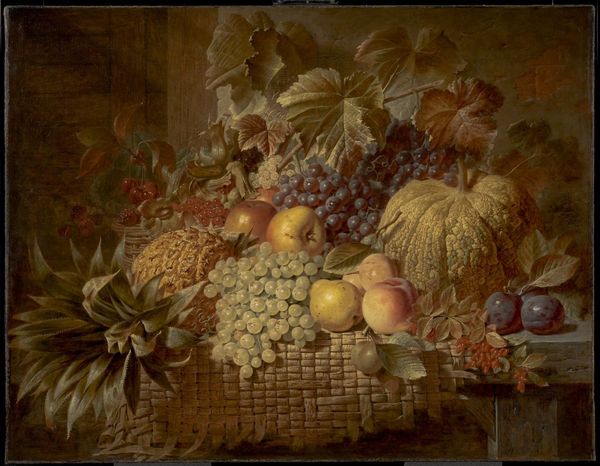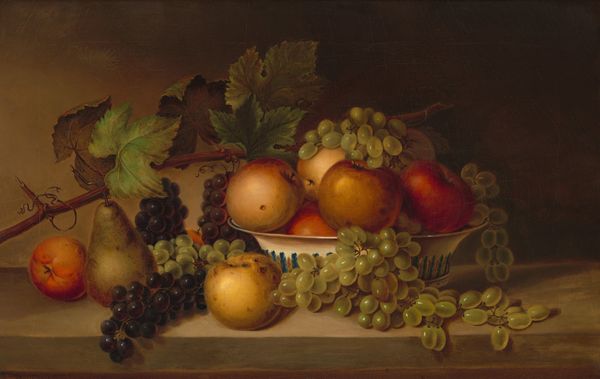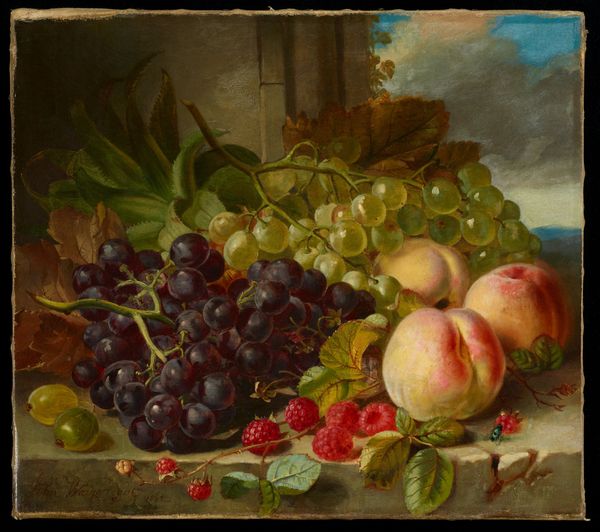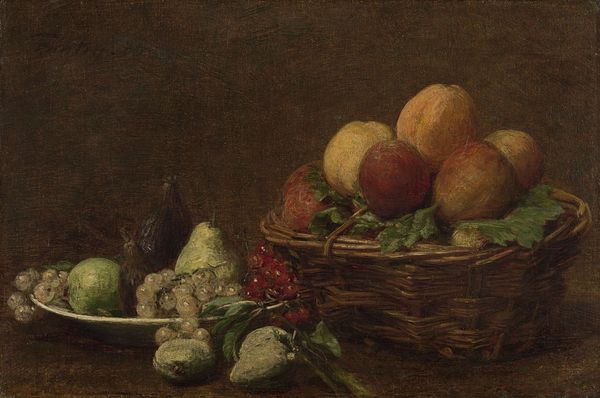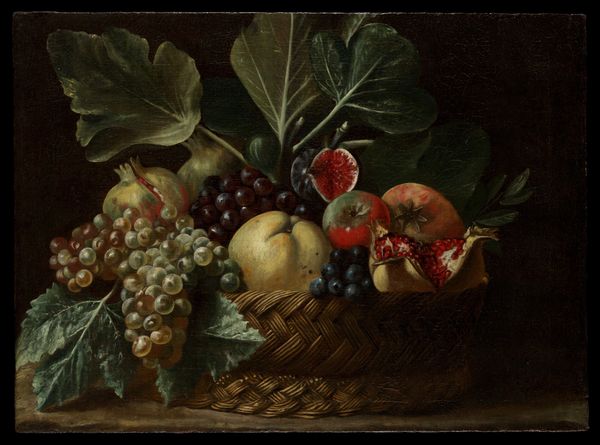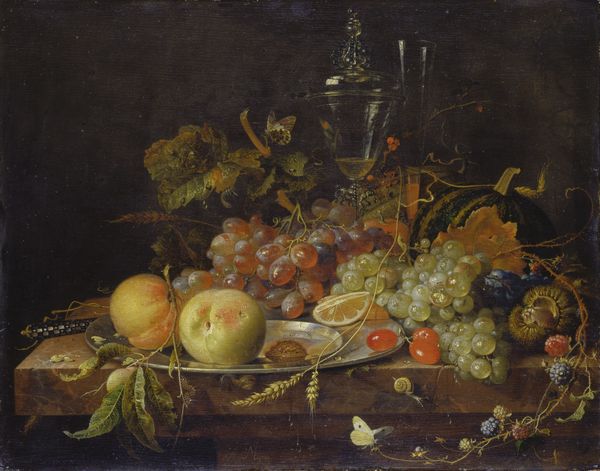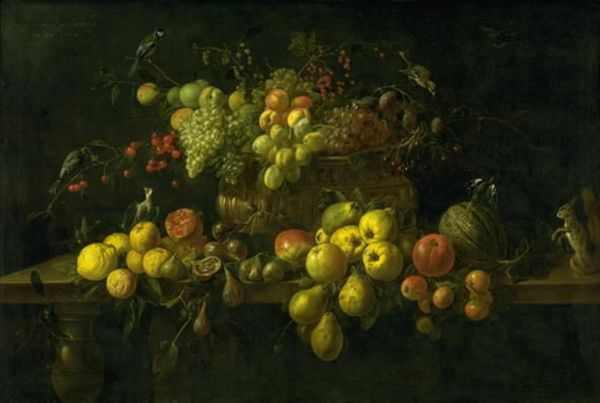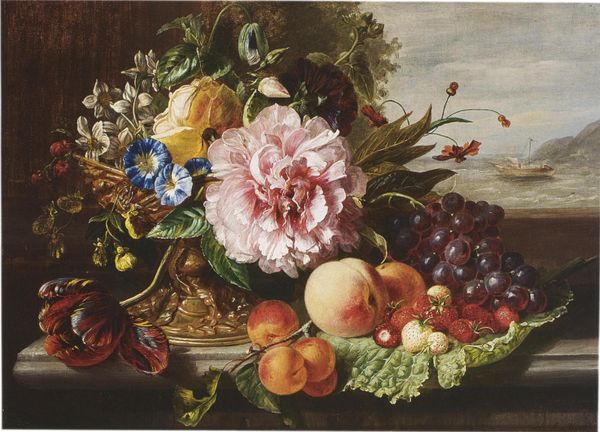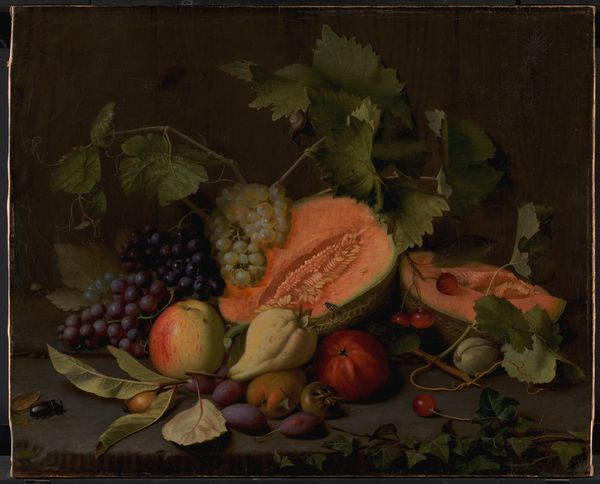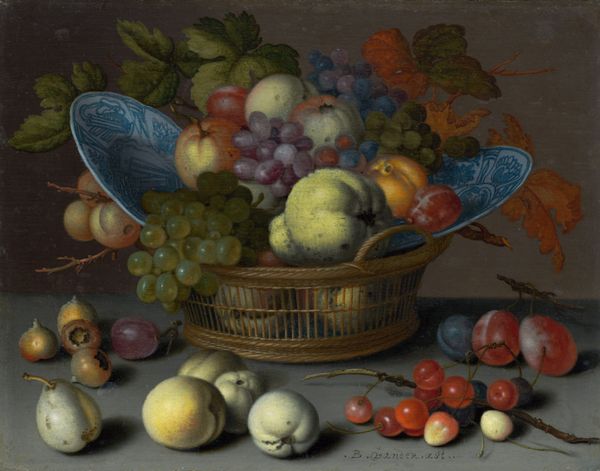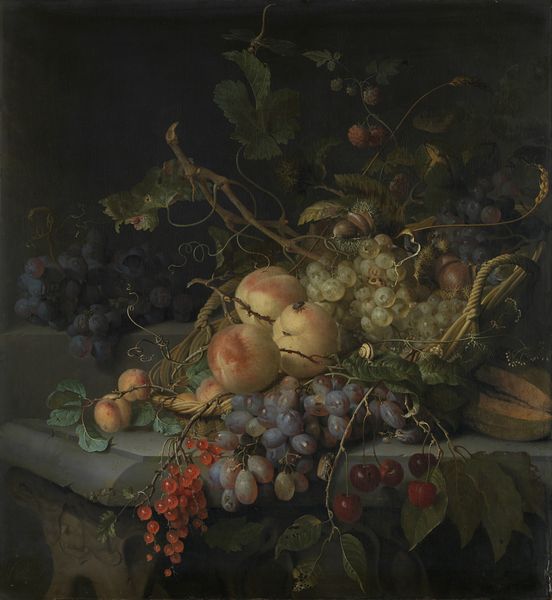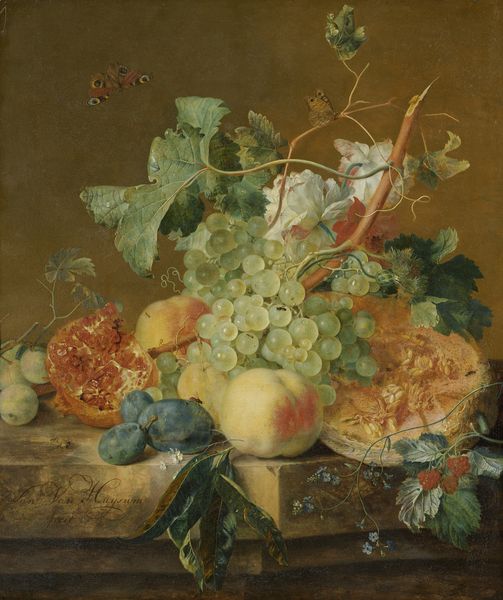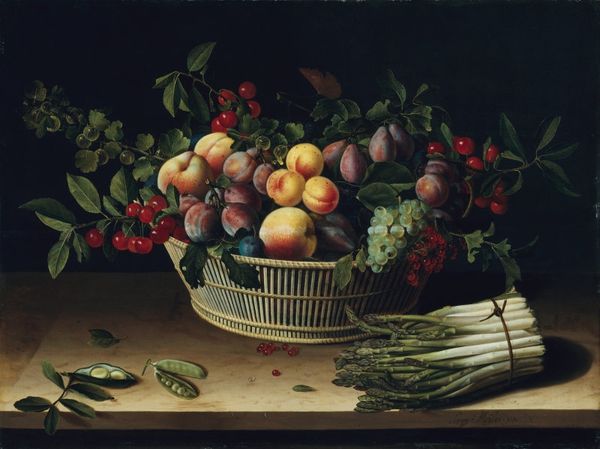
Dimensions: support: 460 x 521 mm frame: 724 x 784 x 106 mm
Copyright: CC-BY-NC-ND 4.0 DEED, Photo: Tate
Curator: This is George Lance's "Fruit ('The Autumn Gift')", though we don't have a specific date for its creation. It resides here at the Tate. Editor: It's so opulent, almost overwhelmingly abundant, isn't it? The textures are incredible; the smooth skins of the peaches against the rough basket weave. Curator: Lance was highly celebrated for his still lifes. They catered to a growing Victorian middle class who enjoyed displays of prosperity and moral messages. Editor: I’m drawn to the inclusion of the bird's nest with eggs; it seems to disrupt the theme of abundance with its inherent vulnerability and mortality. It creates such an interesting tension. Curator: It is a reminder of life's fragility and, perhaps, the ephemeral nature of earthly possessions, a popular Victorian sentiment. Editor: It's interesting how this painting, seemingly simple, engages with complex themes of wealth, mortality, and the natural world. Curator: Indeed, it invites us to consider the social and cultural values reflected in seemingly straightforward depictions of everyday objects.
Comments
tate 6 months ago
⋮
http://www.tate.org.uk/art/artworks/lance-fruit-the-autumn-gift-n00441
Join the conversation
Join millions of artists and users on Artera today and experience the ultimate creative platform.
tate 6 months ago
⋮
Lance began his career as a pupil of the history painter Haydon, but soon devoted himself almost exclusively to still life painting, becoming the leading British artist in this line. He modelled himself on seventeenth and eighteenth-century Dutch and Flemish painters like Jan van Huysum (1682-1749) and Jan van Os (1744-1808), but his art was underpinned by an almost obsessive study of the natural world: by 1847 he had gone through no less than three courses of anatomical dissection. He enjoyed the highest patronage, and painted the prize fruit and other horticultural produce of great houses like Woburn and Blenheim. Gallery label, September 2004
